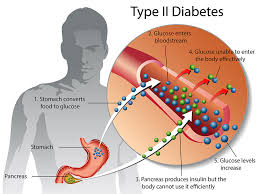References:
[1].
Adeyemi,
A.B., Ijadunola, K.T., Orji, E.O., Kuti, O., Alabi, M.M. (2005). The unmet need
for Contraception among Nigerian Women in the first-year post-partum. European Journal of Contraception and Reproductive
Health Care, 10(4): 229-234.
[2].
Guido,
P. A, (2003). Working Paper on the Determinants of Postpartum Amenorrhea: A Multi-State
Hazard Approach. Center for Demography and
Ecology, University of Wisconsin-Madison. Working Paper No. 96-03.
[3].
Ijadunola
K.T., Orji E.O., Ajibade F.O. (2005). Contraceptive Awareness and Use among sexually
active breastfeeding mothers in Ile-Ife, Nigeria. East African Medical Journal,
85(5): 250-255.
[4].
Kuti
O., Adeyemi, A.B., and Owolabi, A.T. (2007.) Breast-feeding pattern and onset of
menstruation among Yoruba mothers of South-west Nigeria. The European Journal of
Contraception and Reproductive Health Care, 12 (4): 335 -339.
[5].
Kinga
A.S., Donna J. M., and Marc B. R., (2009). Breastfeeding Knowledge, Attitudes, and
Practices among Providers in a Medical Home. Breastfeeding Medicine, 4(1): 31-42.
[6].
Orji, E.O.,Shittu, A.S.,
Makinde, O.N., Sule, S.S. (2004).Effect of prolonged birth spacing on maternal
and perinatal outcome. East African Medical
Journal, 81(8):388-391.
[7].
Foster,
M.S. (2006) Women’s decision about breastfeeding and maternal employment. Journal of Marriage and the family 58, 239-251.
[8].
Sedgh,
G., Bankole A., Boniface, O., Oyeniran, B., Adewole, I. F., Singh, S., Hussain,
R. 2006). Unwanted Pregnancy and Associated
Factors among Nigerian Women International Family Planning Perspectives,
volume 32, Number 4.
[9].
Orji,
E.O., Ojofeitimi, E.O., Olarenwaju, B.A., (2007). The role of men in family planning
decision making in urban and rural Nigeria. European
Journal of Contraception and Reproductive Health Care, 12(1):70-75.
[10]. Orji1, E.O., Adegbenro, C.A., Akinniranye, B. I., Ogunbayo, G. O., Oyebadejo,
A.E. (2007).
Spousal
Communication on Family Planning as a Safe Motherhood Option in Sub-Saharan African
Communities. Journal of Chinese Clinical Medicine,
21(61):328-335.
[11]. Chudasama R., Patel
P., Kavishwar A. (2008). Breastfeeding initiation practice and factors affecting
breastfeeding in South Gujarat region of India. The Internet Journal of Family Practice, 7 (2):1-7.
[12]. Shaaban, O.M., Glasier,
A.F. (2008.). Pregnancy during breastfeeding in rural Egypt. Updated LAM Bibliography,
77: 350-354.
[13]. Uchendu U. O. (2009).
Factors associated with exclusive breastfeeding among mothers seen at the University
of Nigeria Teaching Hospital. South African
Journal of Child Health, volume 3 (1).
[14]. Allagoa, D. O., Nyengidiki, T. K. (2011). Knowledge, Attitude and Practice of
Contraception among antenatal patients at the University of Port Harcourt Teaching
Hospital, Port Harcourt. The Nigerian Health
Journal, Vol. 11, No 3.
[15]. Odu, B. K., Ogunlade,
J. O. (2011). Breastfeeding and Child Spacing among Women
in South West Nigeria. International Journal
for Cross-Disciplinary Subjects in Education, 2, Issue 2:234-237.
[16]. Kulie, T, Slattengren,
A., Redmer, J., Counts, H., Eglash, A. and Schrager, S., (2011). Obesity and Women’s Health: an evidence-based review.
Journal America Board of Family Medicine, 84: 34-38.
[17]. Okolie U. (2012). Problems
encountered by breastfeeding mothers in their practice of exclusive breast feeding
in tertiary hospitals in Enugu State, South-east Nigeria International Journal of Nutrition and Metabolism, 4(8): 107 – 113.
[18]. Labbok, M.H. (2013).
The Lactational menorrhea method (LAM) for
postpartum contraception. Australian Breastfeeding
Association. Retrieved October 5, 2016 from www.breastfeeding.asn.au/bfinfo/lactational-amenorrhea.
[19]. Liu, Y., Gold, E. B.,
Lasley, B. L. and Johnson, W. O. (2004). Factors affecting Menstrual
Cycle
[20]. Characteristics. American Journal
of Epidemiology, 160, (2) 2004, 131–140.

 Return of Menstruation and Perceived Risk of Pregnancy among Exclusive Breastfeeding Women in South West Nigeria: Implications for Timely Introduction of Active ContraceptionAuthor: Ernest OrjiDOI: 10.21522/TIJMD.2013.SE.19.02.Art001
Return of Menstruation and Perceived Risk of Pregnancy among Exclusive Breastfeeding Women in South West Nigeria: Implications for Timely Introduction of Active ContraceptionAuthor: Ernest OrjiDOI: 10.21522/TIJMD.2013.SE.19.02.Art001 Patient-related Factors Associated with type-2 Diabetes Mellitus Control in Peri-Urban Primary Care Setting South AfricaAuthor: John MusondaDOI: 10.21522/TIJMD.2013.SE.19.02.Art002
Patient-related Factors Associated with type-2 Diabetes Mellitus Control in Peri-Urban Primary Care Setting South AfricaAuthor: John MusondaDOI: 10.21522/TIJMD.2013.SE.19.02.Art002
